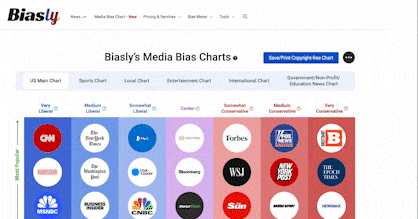 Financial Times Article Rating
Financial Times Article RatingWhy the new post-Brexit 'UKCA' standard is proving such a headache for industry
- Bias Rating
- Reliability
N/AN/A
- Policy Leaning
26% Somewhat Right
- Politician Portrayal
N/A
Continue For Free
Create your free account to see the in-depth bias analytics and more.
By creating an account, you agree to our Terms and Privacy Policy, and subscribe to email updates.
Bias Score Analysis
The A.I. bias rating includes policy and politician portrayal leanings based on the author’s tone found in the article using machine learning. Bias scores are on a scale of -100% to 100% with higher negative scores being more liberal and higher positive scores being more conservative, and 0% being neutral.
Sentiments
N/A
- Liberal
- Conservative
| Sentence | Sentiment | Bias |
|---|---|---|
Unlock this feature by upgrading to the Pro plan. | ||
Reliability Score Analysis
Policy Leaning Analysis
Politician Portrayal Analysis
Bias Meter
Extremely
Liberal
Very
Liberal
Moderately
Liberal
Somewhat Liberal
Center
Somewhat Conservative
Moderately
Conservative
Very
Conservative
Extremely
Conservative
-100%
Liberal
100%
Conservative

Contributing sentiments towards policy:
54% : It is hard to imagine anyone in the "red wall" or pro-Brexit Tory shires ever itching for a UKCA mark when they voted for Brexit, or care a jot about it now.52% : The government is under pressure to relax some of the immigration rules it brought in after Brexit, adding to the Shortage Occupation List, with the trucking industry leading the way in these calls, but other industries are also pushing.
47% : Brexit is often explained by its proponents as first and foremost an expression of sovereignty -- taking back the right of the UK to make its own laws and not to be controlled by "faceless bureaucrats" in Brussels.
47% : You might think, therefore, that this expression of UK sovereignty (a UK version of a CE mark, for its own sake) is an example of what Lowe calls "performative divergence", ie of little actual consequence but important to show that Brexit has delivered concrete change.
37% : A mixture of issues are contributing to this, including the rules around the furlough scheme which make some people reluctant to go back to work, long-term skills deficits as well as the ending of EU "free movement" which until January took up the slack.
*Our bias meter rating uses data science including sentiment analysis, machine learning and our proprietary algorithm for determining biases in news articles. Bias scores are on a scale of -100% to 100% with higher negative scores being more liberal and higher positive scores being more conservative, and 0% being neutral. The rating is an independent analysis and is not affiliated nor sponsored by the news source or any other organization.






















